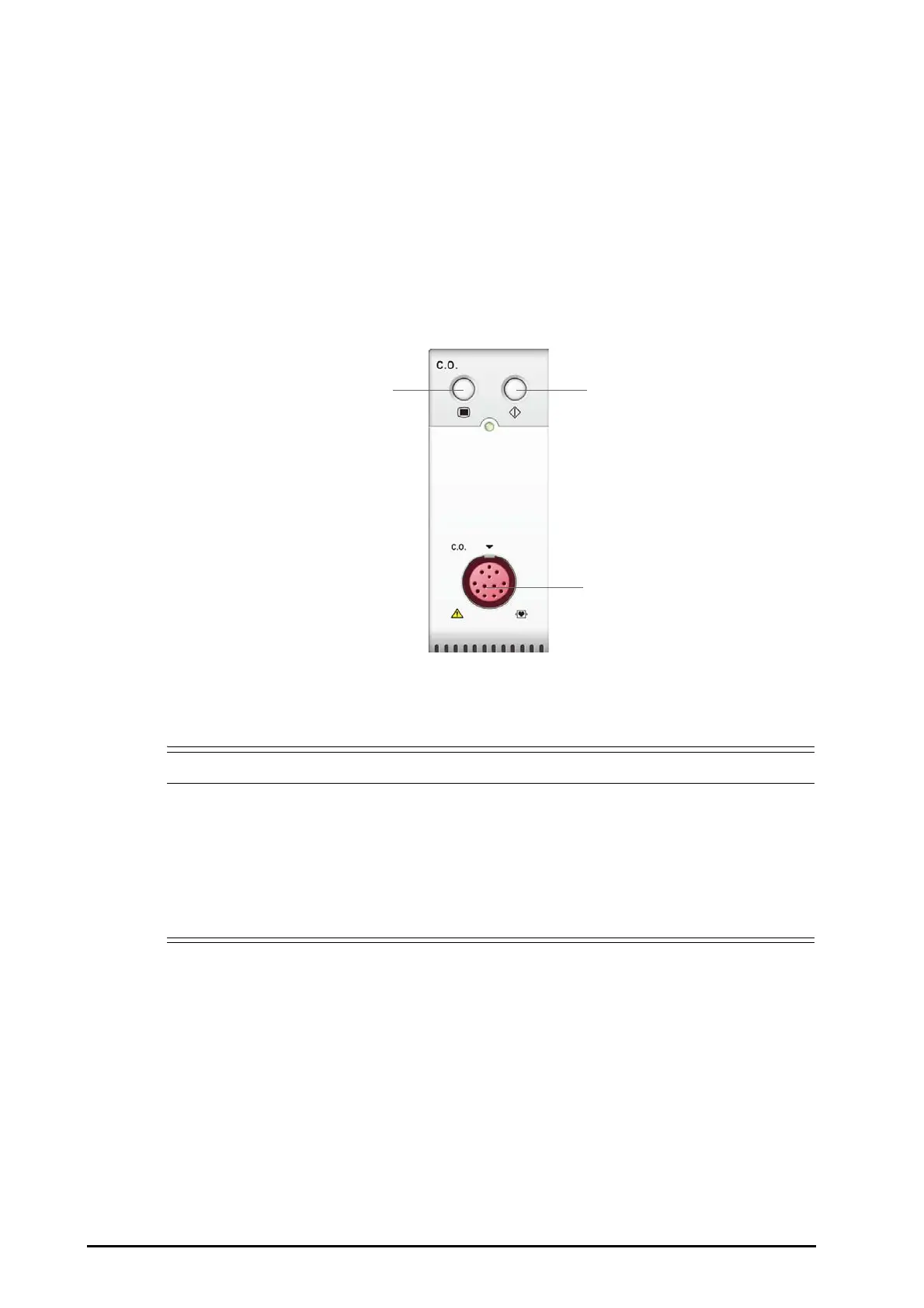17 - 2 BeneVision N22/N19 Patient Monitor Operator’s Manual
17.1 C.O. Introduction
The cardiac output (C.O.) measurement invasively measures cardiac output and other hemodynamic parameters
using the right heart (atria) thermodilution method. A cold solution of known volume and temperature is
injected into the right atrium through the proximal port of a pulmonary artery (PA) catheter. The cold solution
mixes with the blood in the right ventricle and the change in blood temperature is measured with a thermistor
at the distal end of the catheter in the pulmonary artery. The temperature change is displayed as a curve on the
C.O. split screen, and the monitor calculates the C.O. value from this curve. The C.O. value is inversely
proportional to the area under the curve. As cardiac output varies continuously, a series of measurements must
be carried out to achieve a reliable C.O. average value. Always use the average of multiple thermodilution
measurements for therapy decisions. The monitor is capable of storing 6 measurements.
C.O. monitoring is intended for adult patients only.
17.2 C.O. Safety Information
• The C.O. measurement results may be erroneous during electrosurgery.
• All invasive procedures involve risks to the patient. Use aseptic technique and follow catheter
manufacturer's instructions.
• Use only accessories specified in this manual. Make sure that the accessories never come into
contact with conductive parts.
• C.O. monitoring is not intended for pediatric and neonatal patients.
17.3 C.O. Measurement Limitations
The following factors may influence the accuracy of C.O. measurement:
■ temperature of injectate solution
■ volume of injectate solution
■ baseline of patient’s blood temperature
■ patient’s inspiratory/expiratory cycle
■ placement of catheter with relation to proximity of lung field
■ the catheter itself
■ patient’s heart rate and hemodynamic status
(1) C.O. menu hard key (2) C.O. measure menu hard key (3) C.O. cable connector

